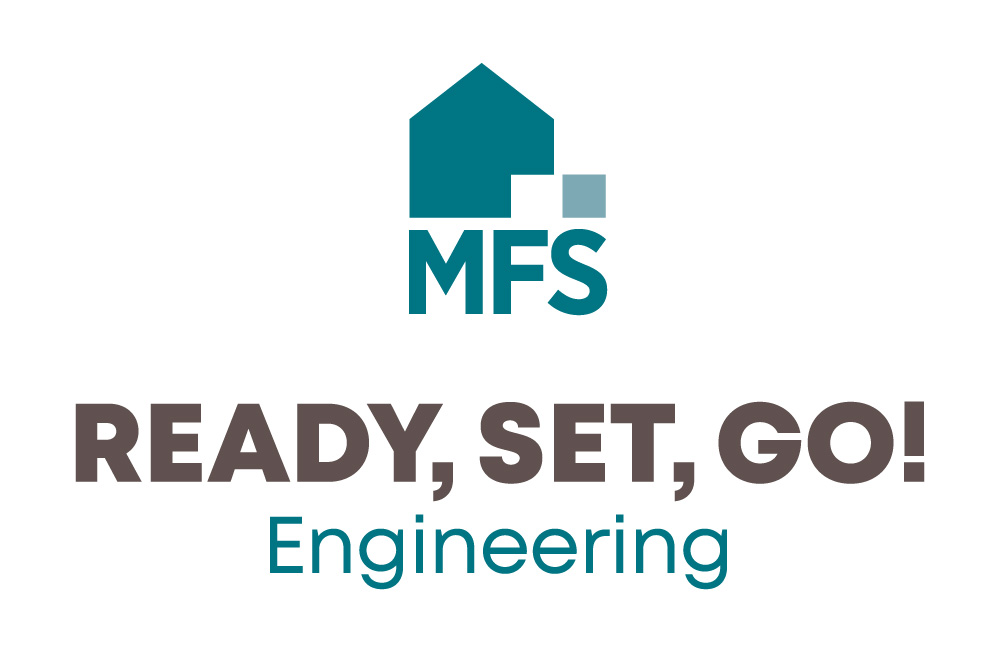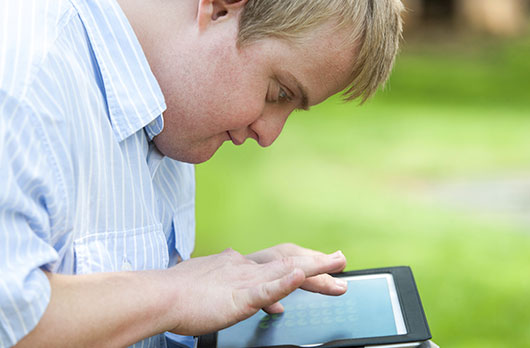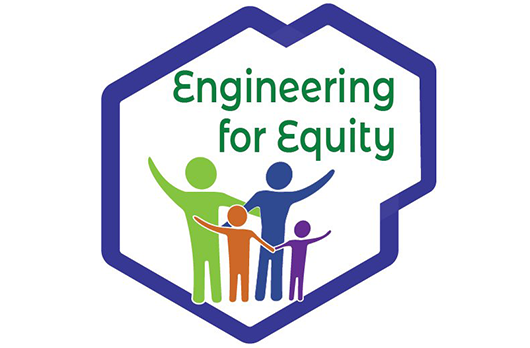TERC Blog
Playful Engineering
Discovering the Unique Potential of Engineering with Young Children and Their Families
Scott Pattison, TERC; Gina Svarovsky, University Of Notre Dame; Smirla Ramos Montañez, TERC; Catherine Wagner, University Of Notre Dame; Viviana López Burgos, TERC; Amy Corbett, MFS; María Quijano, MFS; Diana Contreras, MFS; Sabrina De Los Santos, TERC; María Eugenia Perdomo, MFS
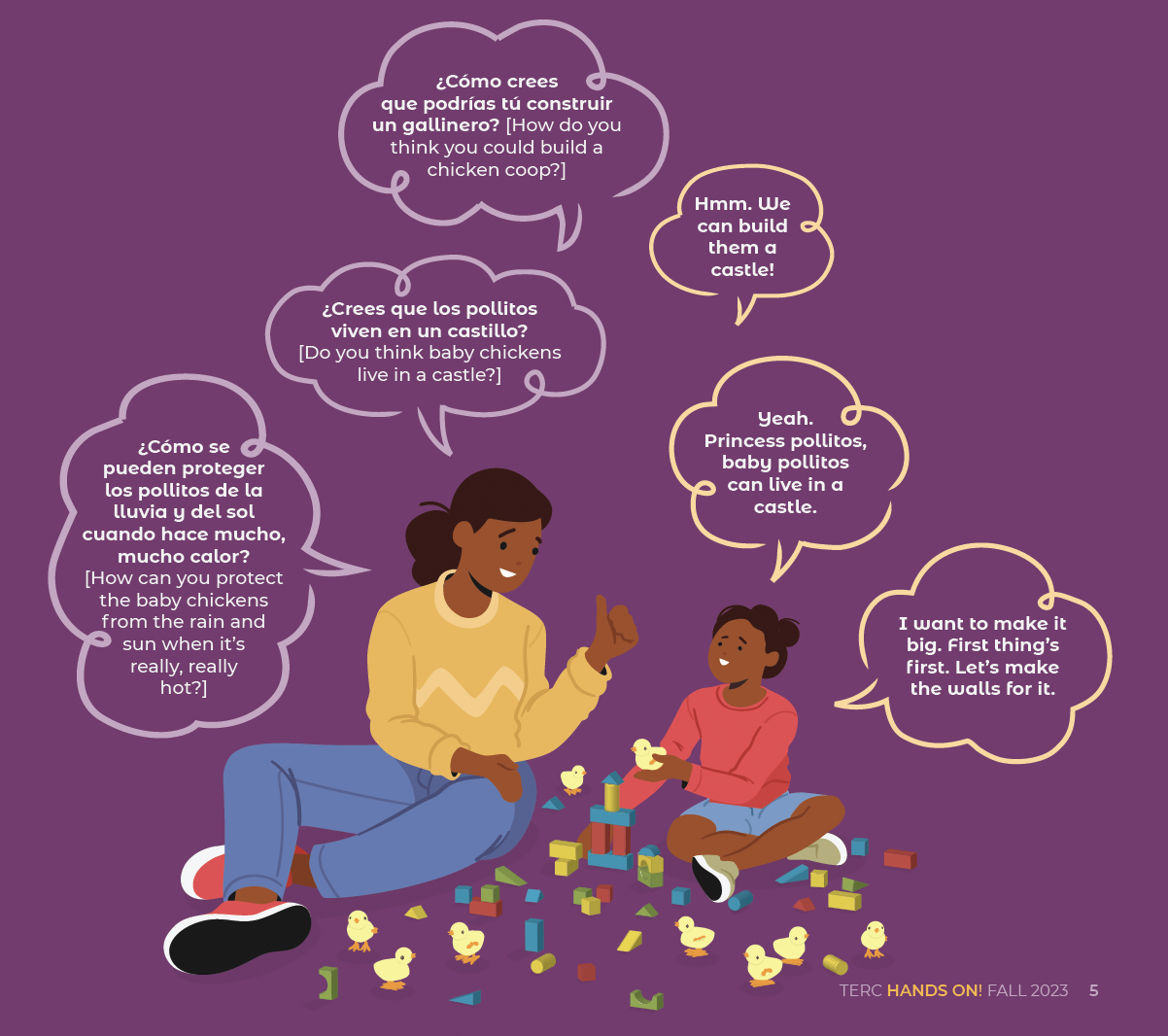
Educators and researchers have long recognized the importance of math and science for young children. Even before they enter the K–12 school system, children are often celebrated as "young scientists" with an intrinsic curiosity and motivation for exploring the world around them (McClure et al., 2017; NRC, 2007). Similarly, researchers have documented the ways that young children begin to develop an understanding of mathematical quantities and relationships from a very early age and how these early experiences with math provide an important foundation for children's long-term learning and development (NCSM &NCTM, 2018; NCTM, 2000).
As the topic of engineering has gained prominence in education, scholars are also beginning to explore what engineering learning might look like for preschool-age children (Ata-Aktürk & Demircan, 2021; Cardella et al., 2021; English & Moore, 2018; Gold et al., 2021; Svarovsky, Cardella, et al., 2017). As a discipline, engineering is related to but distinct from math and science (NASEM, 2020; NAE & NRC, 2009). Both topics are essential to the practice of professional engineering. However, engineering always focuses on developing a design solution to a problem or challenge, usually with the needs of specific communities and the context of a specific project serving as constraints. Professional engineers often use the engineering design process (see example in Figure 1) to guide their work and inform the development, testing, and revision of design solutions (Cunningham, 2018; NAE & NRC, 2009).
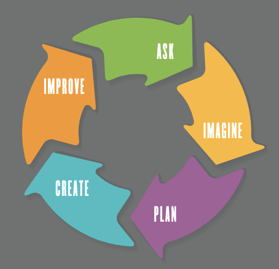 Figure 1. Example representation of the engineering design process (Cunningham, 2018).
Figure 1. Example representation of the engineering design process (Cunningham, 2018).
Our work with families and young children over the last 10 years has confirmed the rich ways these children, with the support of parents, teachers, and other caring adults, can engage with engineering and create solutions to design challenges that are meaningful to them (Pattison et al., 2020; Pattison, Ramos Montañez, & Svarovsky, 2022; Pattison et al., 2016; Pattison, Ramos Montañez, López Burgos, et al., 2023; Svarovsky, Pattison, et al., 2017). Like the interaction featured at the beginning of this article, our research has also revealed the unique ways that these young children engage in engineering, which is in turn expanding our ideas about what engineering education can look like at this age (Pattison, Ramos Montañez, Svarovsky, et al., 2022; Pattison, Svarovsky, et al., 2022; Wagner et al., 2023). In this article, we share findings from our work to inspire others to incorporate engineering into early childhood learning experiences inside and outside of school.
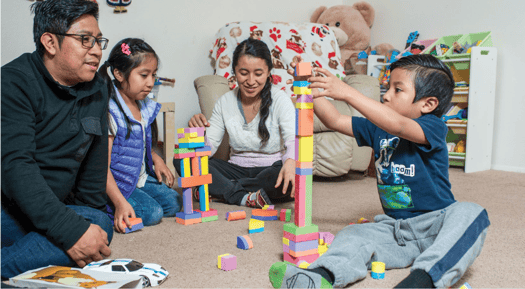 Families engage in many aspects of the engineering design process as they play and build together.
Families engage in many aspects of the engineering design process as they play and build together.
Studying Early Childhood Engineering
Since 2019, we have collaborated with English- and Spanish-speaking families from our local community in Portland, OR, through the Ready, Set, Go! Engineering program to develop and test activities and resources for supporting engineering engagement for preschool-aged children (3 to 5 years) and their families (Pattison, Ramos Montañez, Svarovsky, et al., 2023; Wagner et al., 2023). The program is part of a National Science Foundation-funded design-based research project lead by the University of Notre Dame in partnership with TERC and Metropolitan Family Service (MFS). MFS is a not-for-profit organization that provides a range of family services for low-income, racially, and ethnically diverse communities across the metropolitan region. In partnership with MFS educators and leaders, the project leveraged the deep relationships the organization has built with families to support collaborations with caregivers and children throughout the research process.
During the 2019-20 and 2020-21 school years, we partnered with 15 English- and Spanish-speaking families from MFS's early childhood program to iteratively test and refine a set of three home-based engineering activity kits for families. Each kit included a bilingual storybook, which served as the inspiration for the design challenge, as well as a bilingual activity guide for parents and materials for families to explore and develop design solutions. For example, the Pollitos activity challenged families to use colorful wooden blocks to build a structure that would keep a hen and her family of baby chicks safe and cozy (Figure 2). In this case, the activity was inspired by a traditional children's song, Los Pollitos Dicen, which is popular in many Spanish-speaking countries.
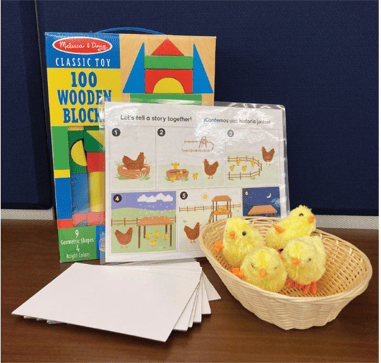 Figure 2. Photo of the Pollitos family engineering activity from the Ready, Set, Go! Engineering project.
Figure 2. Photo of the Pollitos family engineering activity from the Ready, Set, Go! Engineering project.
What We Learned
"Hay un dicho que se dice en México: Tu eres ingeniero en tu propia vida. Mucha gente lo dice… Pero ahora digo, 'Oh, es verdad.' Ingeniería es estable diario con nosotros... ya cuando empezamos haciendo las actividades de los programas, decíamos que ingeniería está aquí y lo vemos, pero no sabemos." [There's a saying in Mexico: You're the engineer in your own life. A lot of people say it…. But now, I say, 'Oh, it's true.' Engineering is a daily constant for us. When we started the program activities, we said that engineering is here and we see it, but we didn't realize it before.]
The collaborative research with families not only helped us develop an engaging set of engineering activities, but it also revealed deep insights about the unique ways that young children and their families engage with engineering.
1. Young children with the support of their families are capable of rich engagement with engineering design practices.
The study added to the growing evidence that preschool-age children are capable of engaging deeply with engineering and practicing all aspects of the engineering design process (Cardella et al., 2021; NASEM, 2021). We observed children and families thinking deeply about the nature of the design challenge, exploring the constraints and affordances of the materials, brainstorming and planning their designs, building and testing solutions, and making revisions based on what they learned. We observed the important ways that parents and other family members supported children's engagement, including helping to frame the challenge, adapting the activity to the specific needs and abilities of their children, and collaborating in the design and testing process. From families, we also learned about the many ways these engineering experiences can support other family goals, such as helping children practice multiple languages, managing frustration, or creating opportunities for families to spend quality time together.
2. Young children and families use story, narrative, and imagination to bring their engineering experiences to life.
All the engineering activities in the project were based on stories and included materials to help enrich the narrative context, such as stuffed animals. What we learned from the study is that these narratives, combined with children's natural imagination, were essential to how families engaged with the engineering. The books were treasured elements of the activity kits, creating a launching point as families used the narratives, characters, and materials to set the context for the design challenges. For example, with the Pollitos activity, many families spent time playfully engaging with the baby chickens and singing the song before building. Families also used the stories and narratives to motivate user-centered design, such as thinking about how to build a structure to keep the baby chickens safe and adding other design elements (windows, kitchen, bed) that the babies needed to be cozy. Stretching the boundaries of traditional engineering education, children and families also used their stories and imagination to creatively modify the original design challenges—like deciding that the chickens were really princes and princesses and what they needed was a towering castle to protect them from monsters. This not only helped connect the activities to children's existing interests but often motivated ongoing design and revision well beyond the original challenges.
3. Young children and families are flexible in how they use engineering.
The engineering design process is often portrayed as linear and rigid. But professional engineers do not follow the same steps or use those steps in the same order every time (NAE & NRC, 2009). And the same is true for families. Sometimes families began by talking about the design challenge and brainstorming possible solutions. But just as often, they would jump right into building and testing, fleshing out the challenge as they went. In many cases, thinking about the engineering problem and planning their design was interwoven throughout their process of exploring, building, and testing. Sometimes families only engaged in a few aspects of the engineering design process during a particular interaction, like focusing on materials exploration or testing different structures without talking about the original challenge. Similarly, families naturally blended science inquiry and engineering design during the activities. For example, families often spent time exploring the properties of the materials, like how the blocks stacked together, before they got deeper into the design challenge. In almost every case, this flexibility seemed to be an important and natural way for young children and their families to engage with engineering.
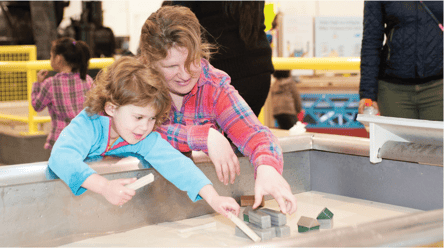 The way families naturally use materials can provide inspiration for new engineering design activities.
The way families naturally use materials can provide inspiration for new engineering design activities.
Recommendations for Educators
We know that young children are capable of engaging deeply with engineering from an early age. Not only that, but the ways they engage with engineering design activities are often unique, surprising, and inspiring. Given what we've learned from families during this project, here are some ideas for educators to keep in mind when integrating engineering into their work with young children and families:
- Start with a book, story, or song. These are great sources of inspiration for engineering design challenges and great ways to set the context for an engineering activity.
- Add a design challenge to an inquiry activity. If there is a science inquiry activity that children and families already enjoy, try adding an engineering design challenge to build on children's natural inclination to both explore and create. This might be as simple as a question: "Can you build a home with these blocks to keep the animals safe and cozy?" or "Plan a taco party for your friends and family. How will you arrange the plates and food for your guests?"
- Use stuffed animals and other characters. Young children love stuffed animals and other character toys, like dolls or wind-up figurines. We've found these can be powerful motivators for user-centered design and help children and families use their imagination to continuously expand on their original creations.
- Carefully choose materials. It's important to think about how materials will work with young fingers and how those materials align with the engineering design challenge so that children can take the lead in building and testing and families can find many different solutions to the same challenge.
- Follow the lead of children and families. As you try out new engineering activities, see what children and families are interested in and let this be your primary guide to creating rich, rewarding engineering learning experiences.
- Don't feel pressure to do it all. Start by trying a small engineering addition to an activity or focusing on one or two aspects of the engineering design process.
Most importantly, enjoy learning about engineering with families!
Additional Resources
Ready, Set, Go! Engineering project website
(https://www.terc.edu/familystem/ready-set-go-engineering/)
Head Start on Engineering project website
(https://www.terc.edu/hse/)
More ideas for incorporating engineering into early childhood
programs (https://shorturl.at/bcqyA)
Acknowledgements
We are grateful to Metropolitan Family Service families and staff for sharing their time and expertise with us throughout this project. This material is based upon work supported by the National Science Foundation under Grant Number 1930848. Any opinions, findings, conclusions or recommendations expressed in this material are those of the authors and do not necessarily reflect the views of the National Science Foundation.
References
STEM Learning with Parent-Involved Early Engineering Education. Early Childhood Education Journal, 49(4), 607–621. https://doi.org/10.1007/s10643-020-01100-1
Cardella, M. E., Svarovsky, G. N., & Pattison, S. A. (2021). Engineering education in pre-kindergarten through fifth grade: An overview [Commissed report for the Committee on Enhancing Science and Engineering in Prekindergarten through Fifth Grades]. https://nap.nationalacademies.org/resource/26215/Engineering-Education-in-PreK-5th-Grade.pdf
Cunningham, C. M. (2018). Engineering in elementary STEM education: Curriculum design, instruction, learning, and assessment. Teachers College Press.
English, L., & Moore, T. (Eds.). (2018). Early Engineering Learning. Springer. https://doi.org/10.1007/978-981-10-8621-2
Gold, Z. S., Elicker, J., Evich, C. D., Mishra, A. A., Howe, N., & Weil, A. E. (2021). Engineering play with blocks as an informal learning context for executive function and planning. Journal of Engineering Education, 110(4), 803–818. https://doi.org/10.1002/jee.20421
McClure, E. R., Guernsey, L., Clements, D. H., Bales, S. N., Nichols, J., Kendall-Taylor, N., & Levine, M. H. (2017). STEM starts early: Grounding science, technology, engineering, and math education in early childhood. The Joan Ganz Cooney Center at Sesame Workshop. http://www.joanganzcooneycenter.org/publication/stem-starts-early/
National Academies of Sciences, Engineering, and Medicine. (2020). Building capacity for teaching engineering in K-12 education. National Academies Press. https://doi.org/10.17226/25612
National Academies of Sciences, Engineering, and Medicine. (2021). Science and engineering in preschool through elementary grades: The brilliance of children and the strengths of educators (E. A. Davis & A. Stephens, Eds.; p. 26215). National Academies Press. https://doi.org/10.17226/26215
National Academy of Engineering & National Research Council. (2009). Engineering in K-12 education: Understanding the status and improving the prospects. National Academies Press.
National Council of Supervisors of Mathematics & National Council of Teachers of Mathematics. (2018). Building STEM education on a sound mathematical foundation. https://www.nctm.org/Standards-and-Positions/Position-Statements/Building-STEM-Education-on-a-Sound-Mathematical-Foundation/
National Council of Teachers of Mathematics. (2000). Principles and standards for school mathematics. National Council of Teachers of Mathematics. https://www.nctm.org/Standards-and-Positions/Principles-and-Standards/
National Research Council. (2007). Taking science to school: Learning and teaching science in grades K-8 (R. A. Duschl, H. A. Schweingruber, & A. W. Shouse, Eds.). National Academies Press.
Pattison, S. A., Corrie, P., Benne, M., & Svarovsky, G. N. (2016). Head Start on Engineering: Supporting Engineering Interest Development in Early Childhood [Poster]. Visitor Studies Association Conference, Boston, MA.
Pattison, S. A., Ramos Montañez, S., López Burgos, V., Svarovsky, G. N., Wagner, C., Douglass, A., & Allen, J. (2023, June). Family voices: Learning from families with preschool-age children from historically marginalized communities to expand our vision of engineering. American Society of Engineering Education Annual Conference, Baltimore, MD. https://nemo.asee.org/public/conferences/327/papers/37501/view
Pattison, S. A., Ramos Montañez, S., & Svarovsky, G. (2022). Family values, parent roles, and life challenges: Parent reflections on the factors shaping long-term interest development for young children and their families participating in an early childhood engineering program. Science Education, 106(6), 1568–1604. https://doi.org/10.1002/sce.21763
Pattison, S. A., Ramos Montañez, S., Svarovsky, G. N., & Tominey, S. (2022). Engineering for equity: Exploring the intersection of engineering education, family learning, early childhood, and equity. TERC. https://info.terc.edu/e2-ebook-0
Pattison, S. A., Ramos Montañez, S., Svarovsky, G. N., Wagner, C., Corbett, A., Quijano, & López Burgos, V. (2023). Activity design principles to support engineering design practices for families with preschool-age children from low-income English- and Spanish-speaking communities [Manuscript in review].
Pattison, S. A., Svarovsky, G. N., Corbett, A., Perdomo, M. E., Ramos Montañez, S., Wagner, C., López Burgos, V., & De Los Santos, S. (2022, April). Playful materials catalyze imaginative play and shift the nature of engineering design for preschool-age children and their families [Poster]. Society for Research in Child Development: Learning through Play and Imagination, St Louis, MO. https://doi.org/10.13140/RG.2.2.19143.16803
Pattison, S. A., Svarovsky, G., Ramos Montañez, S., Gontan, I., Weiss, S., Núñez, V., Corrie, P., Smith, C., & Benne, M. (2020). Understanding early childhood engineering interest development as a family-level systems phenomenon: Findings from the Head Start on Engineering project. Journal of Pre-College Engineering Education Research (J-PEER), 10(1), 72–89. https://doi.org/10.7771/2157-9288.1234
Svarovsky, G. N., Cardella, M., Dorie, B. L., & King, Z. (2017). Productive forms of facilitation for young girls during engineering activities within informal learning settings. American Educational Research Association Annual Meeting, San Antonio, TX.
Svarovsky, G. N., Pattison, S. A., Verbeke, M., Benne, M., & Corrie, P. (2017, June). Head Start on Engineering: Early findings (work in progress). ASEE Annual Conference & Exposition, Columbus, OH. https://www.asee.org/public/conferences/78/papers/20296/view
Wagner, C., Svarovsky, G. N., Lettau, M., Marfo, K., Lorena Ortiz, A., Ryan, D., Pattison, S. A., Ramos Montañez, S., López Burgos, V., De Los Santos, S., Quijano, M., & Corbett, A. (2023, June). Exploring the nature of engineering during home-based engineering activities designed for Spanish- and English-speaking families with young children. American Society for Engineering Education Annual Conference, Baltimore, MD. https://nemo.asee.org/public/conferences/327/papers/37959/view

